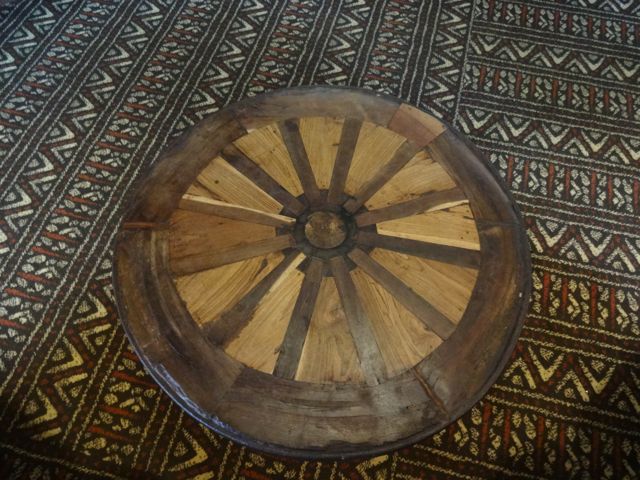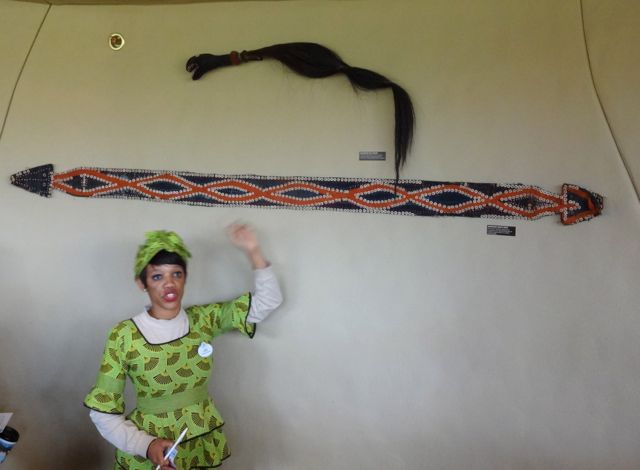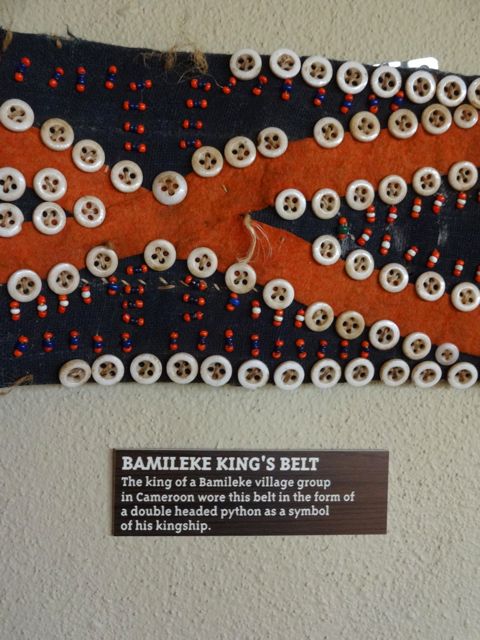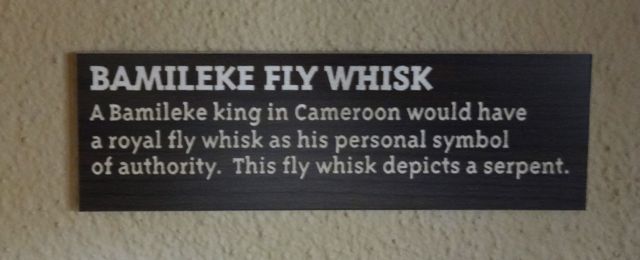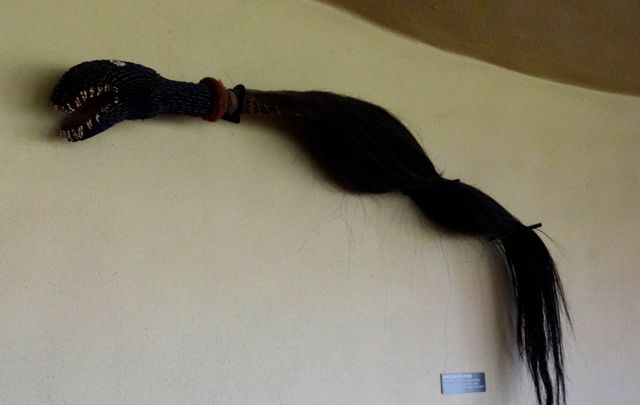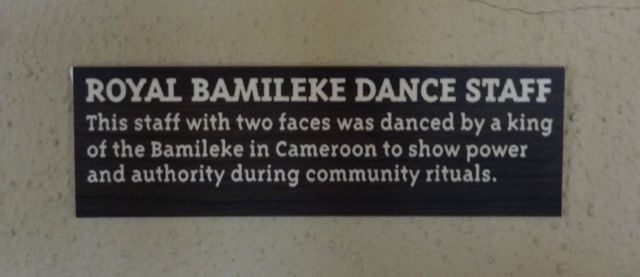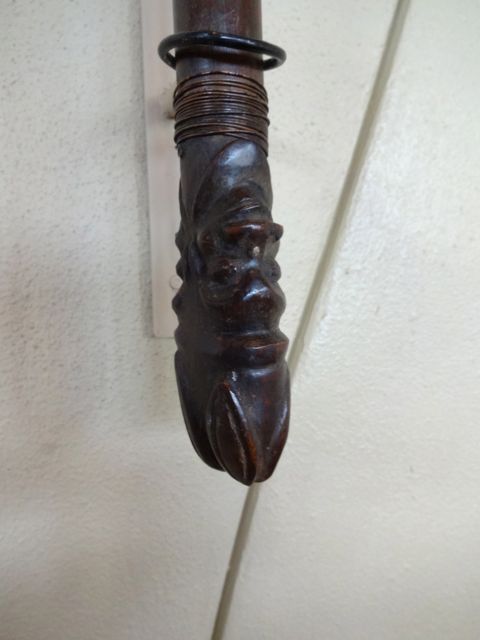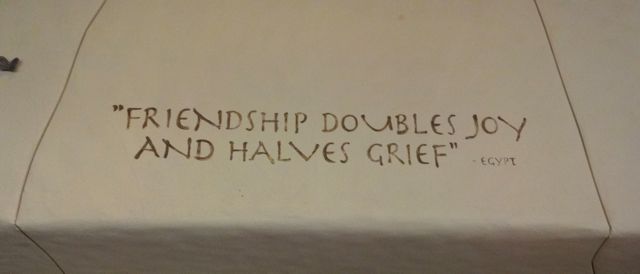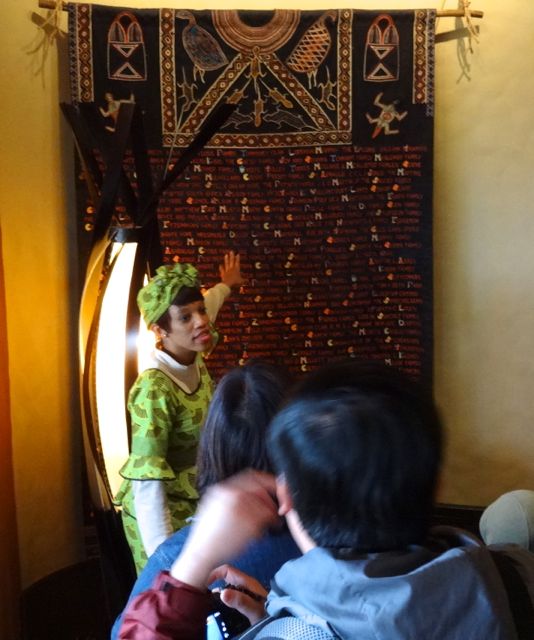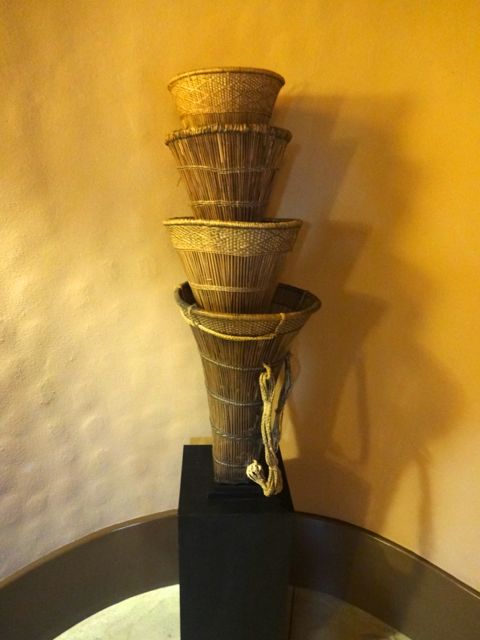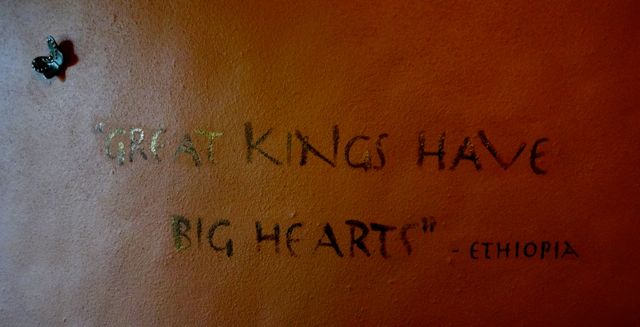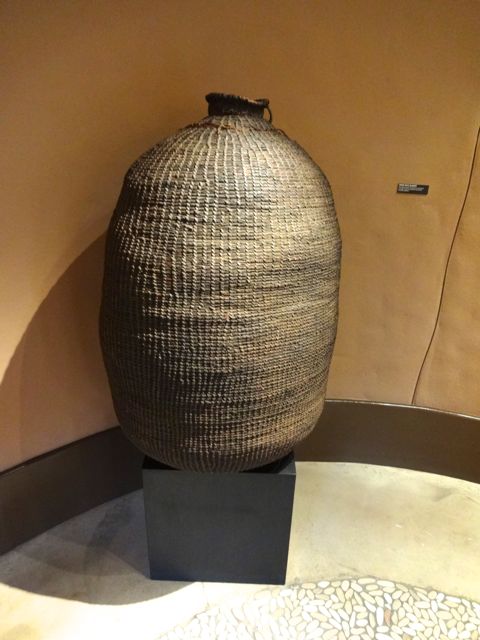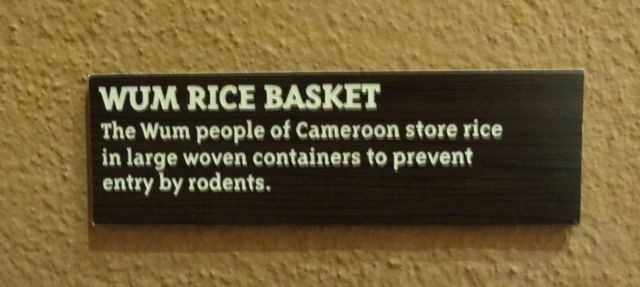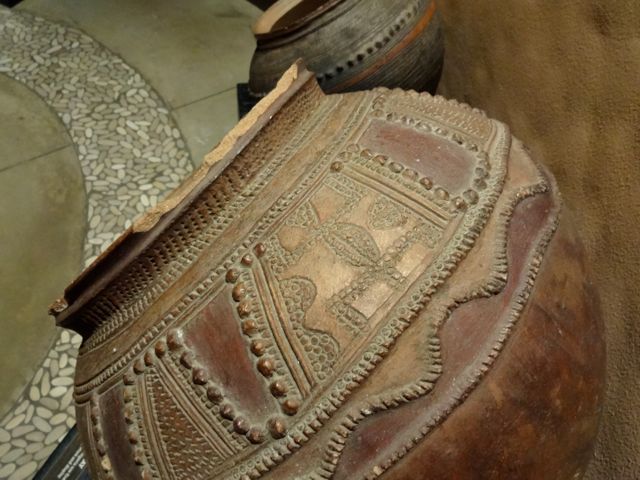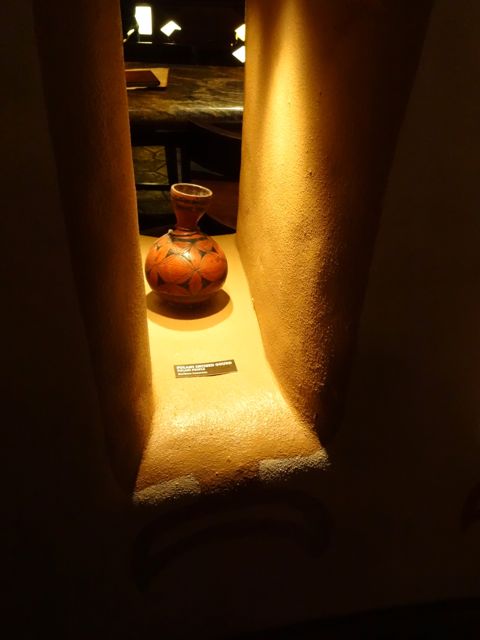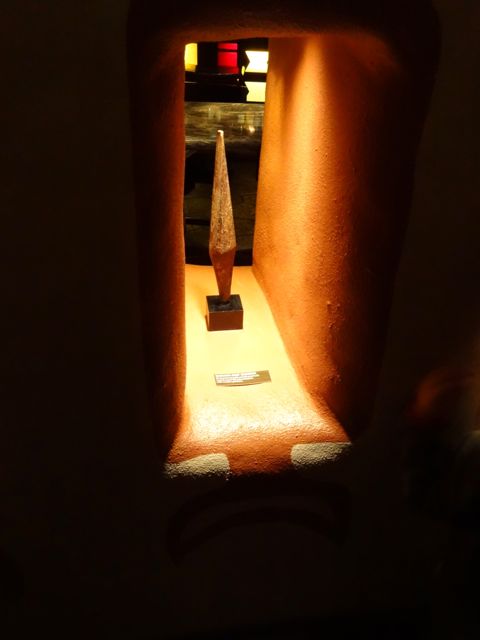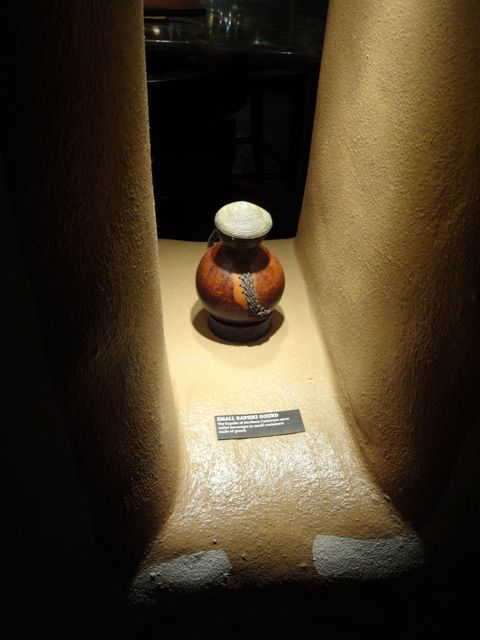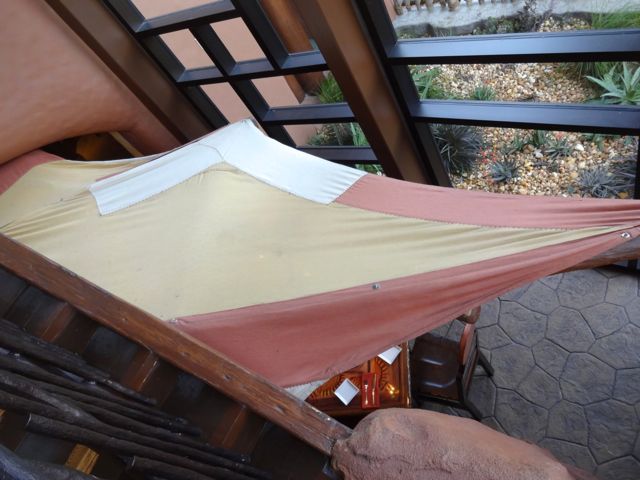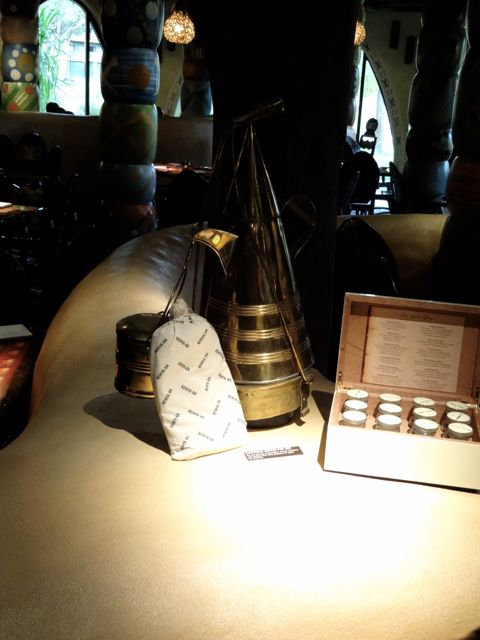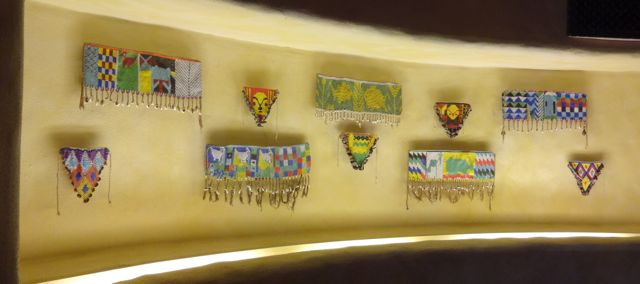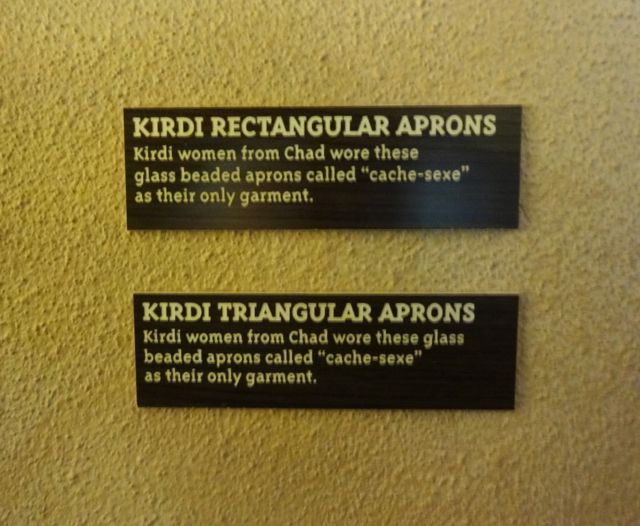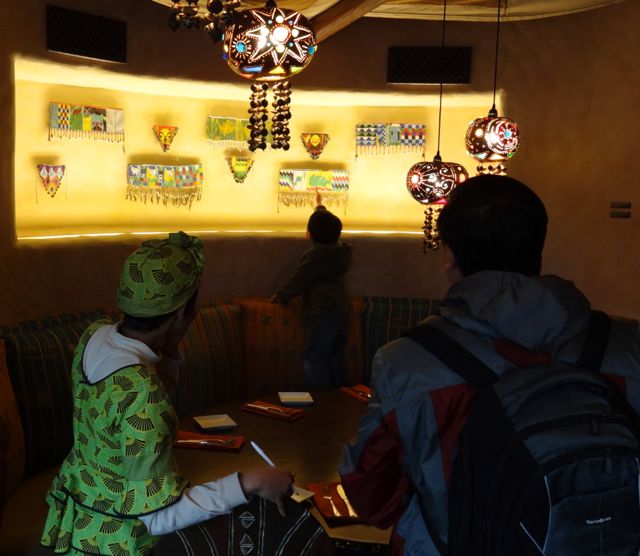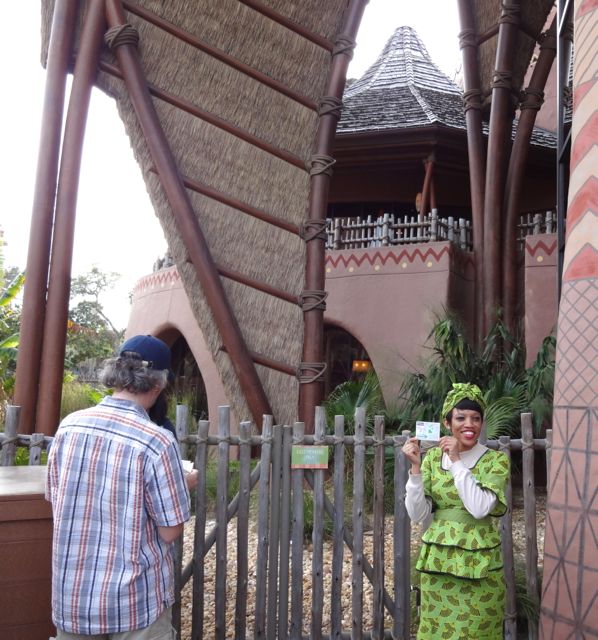We recently heard about the African-Inspired, Disney-Designed Tour of Animal Kingdom Lodge Kidani Village and decided that it sounded like a fun thing to do.
Our tour guide was Lebo from Botswana. She explained that there are 75 cultural representatives at Disney’s Animal Kingdom Lodge, they usually stay for one year and every three months a new group comes in (in other words, there are always new, less new, experienced, very experienced cultural representatives at the resort & dvc).
She began by explaining that the original Animal Kingdom Lodge is named “Jambo House” meaning “hello house” and that “Kidani” means “necklace”… In fact, if you look up at the tops of the Kidani village buildings, you’ll see bead patterns reflective of the necklace theme. (If take the time to really look around, you’ll see necklaces, beads, and such all over the place.) There are over 800 artifacts around Jambo House and Kidani Village; MANY of them are not kept behind glass and you’re invited to touch them and truly experience them (didn’t know that, we were both brought up with “don’t touch, it isn’t yours”).
Lebo was an excellent guide, very entertaining and engaging, also very calm and happy (even though there was a small child on the tour). She told us that she had always dreamed of coming to America and working, it’s a boon for Africans who return home to work. She left her 3 year old daughter with her mother in Africa to come to Walt Disney World to work, she said it was an investment in her future and more importantly, in her daughter’s future. We wish her good luck wherever she may go in the future.
WARNING – THERE ARE A LOT OF SPOILERS IN THIS BLOG POST – WARNING
WARNING – THERE’S A LOT OF LEARNING IN THIS BLOG POST – WARNING
So, on to the tour…
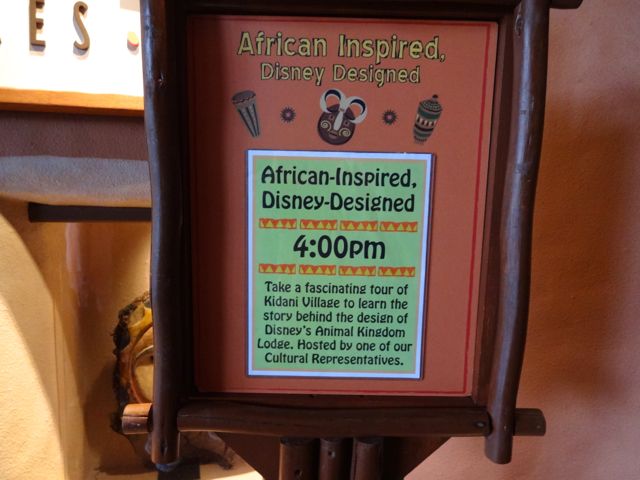
This free resort tour begins at 4:00 pm every day and leaves from the lobby of Kidani Village, right outside of Johari Treasures (lobby shop)
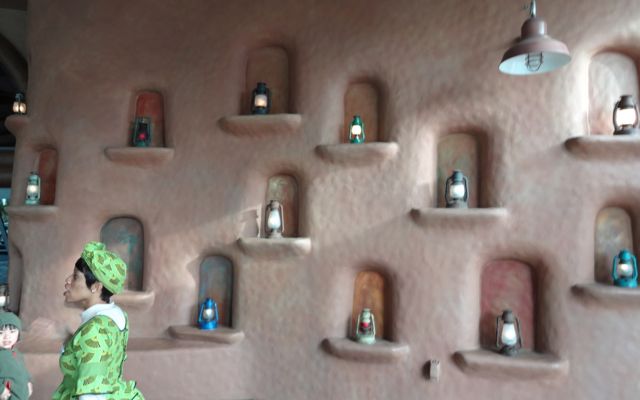
We stepped outside to the entrance to Kidani Village… There are numerous lanterns placed in niches in the wall, all lit. This is a sign of Welcome Home (the slogan of DVC)
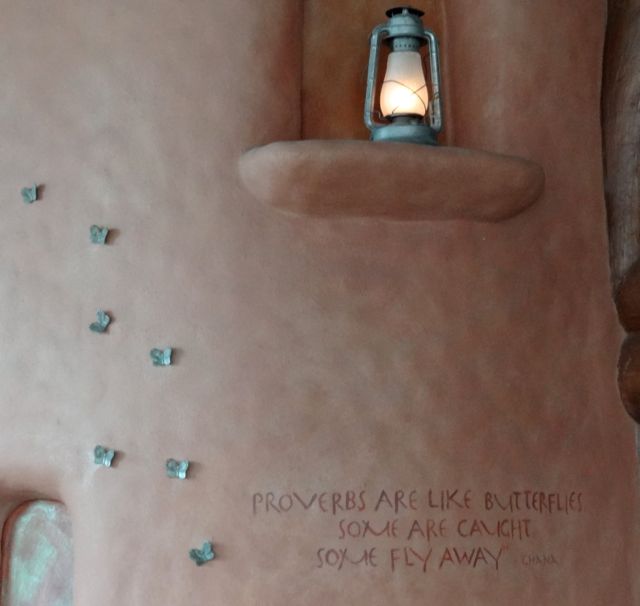
On the opposite wall as you enter Kidani Village, there is a proverb “Proverbs are like butterflies, some are caught, some fly away” – this means that some proverbs you understand and some you don’t. Also, throughout the resort, there are proverbs on the walls, each accompanied by a butterfly
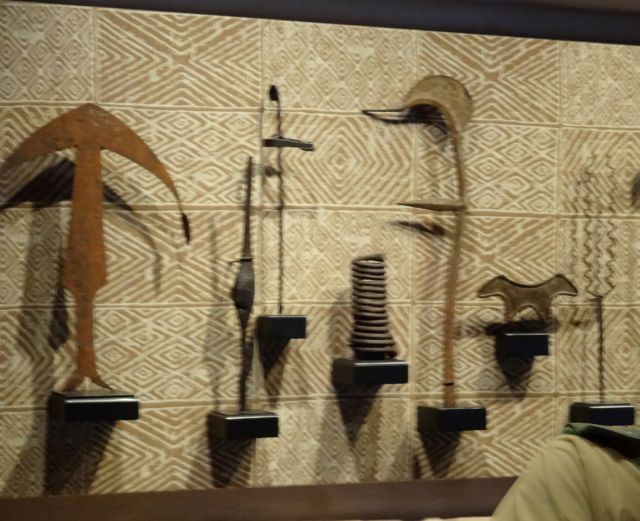
These tools are mounted behind the front desk – why? other than they’re interesting and art-like… Because, in Africa, tools have been used for barter (if you needed goods or services you could trade a tool for what you needed), they were like cash and since the front desk deals with payments for your visit, the tools are quite appropriate

Hidden Mickeys are everywhere at Walt Disney World… Here’s one that can be found in the lobby light fixture…
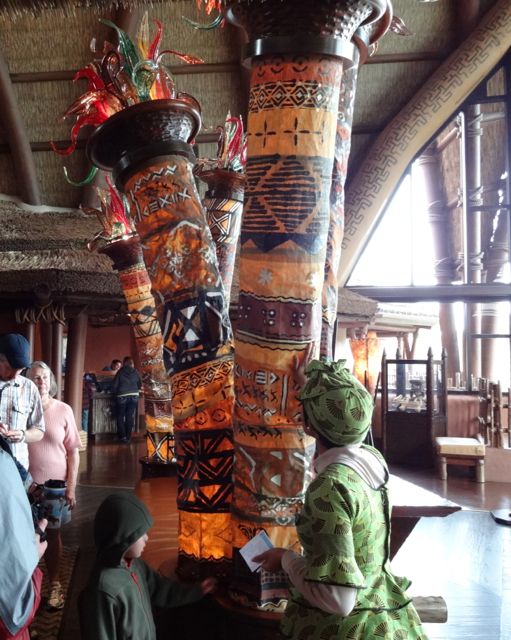
These columns are covered in Kente cloth, the designs have meaning known only to the individual who creates them (note, these don’t look like the kente cloths usually seen)
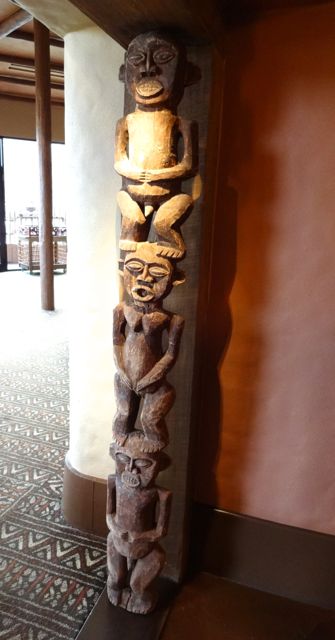
There are two of the “totems” on either side of the entrance to the “king’s room” – they are guards that request your allegiance to the king
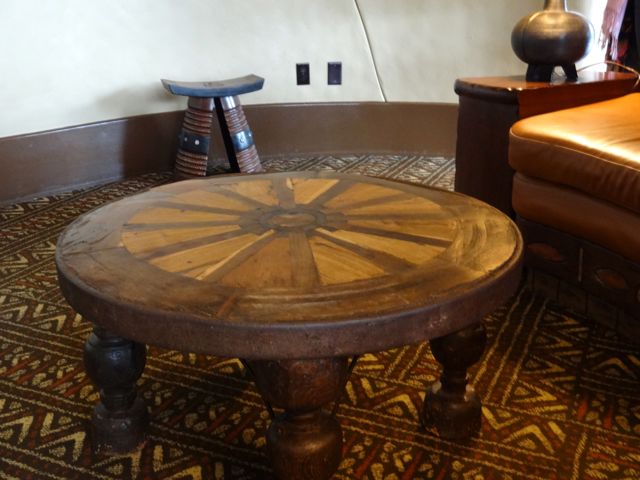
This item is not only a table. A king in Africa gave this wagonwheel to Disney as a gift – the Imagineers turned into a table for the King’s Room (Royal Room)
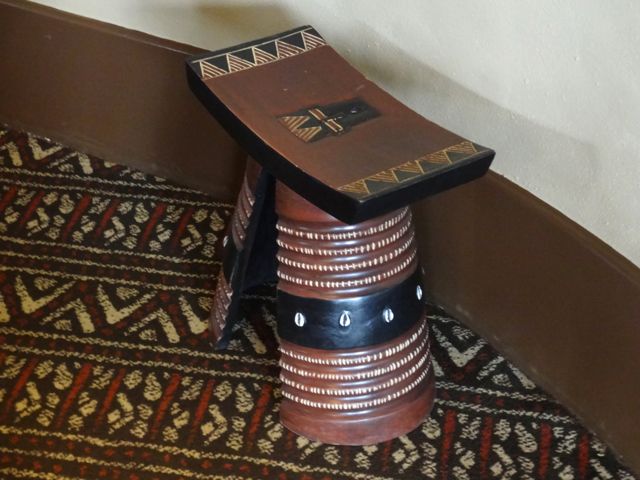
There are two of these stools in the King’s Room, only men sit on the stools, women sit on the floor – all about showing respect for the king
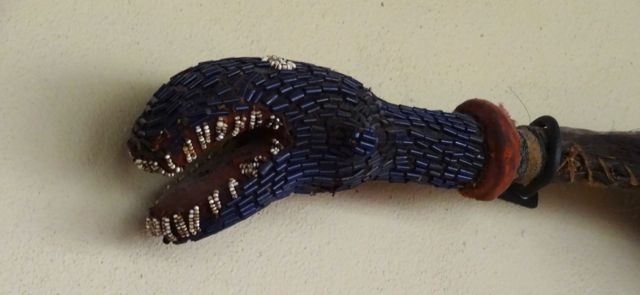
The handle is a blue beaded serpent head – this was used to whisk flies, to sweep things away, to sprinkle special water, and for dancing
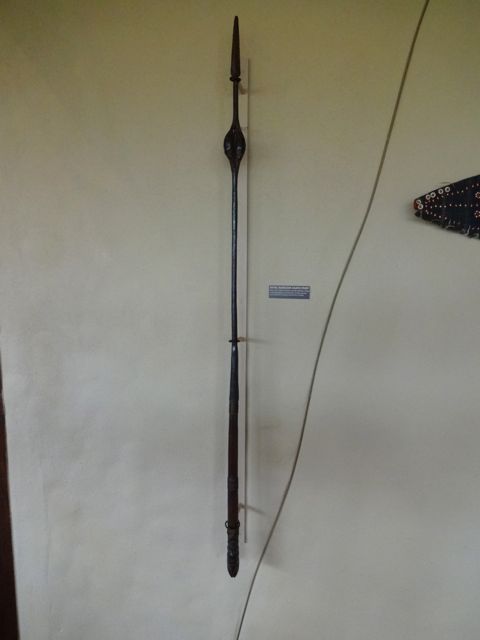
The staff has a point at one end, the bulge near the top looks like 3 semi-open pea pods, and at the bottom there are two faces
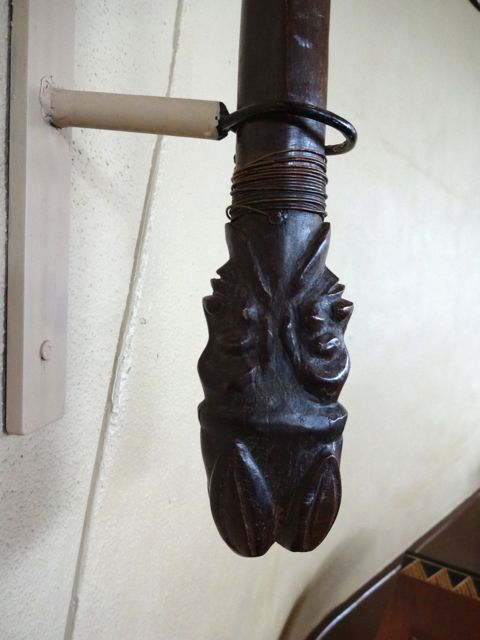
Ah! Now you can see that the faces point to the ceiling. It’s very nice that so many of the artifacts are touchable
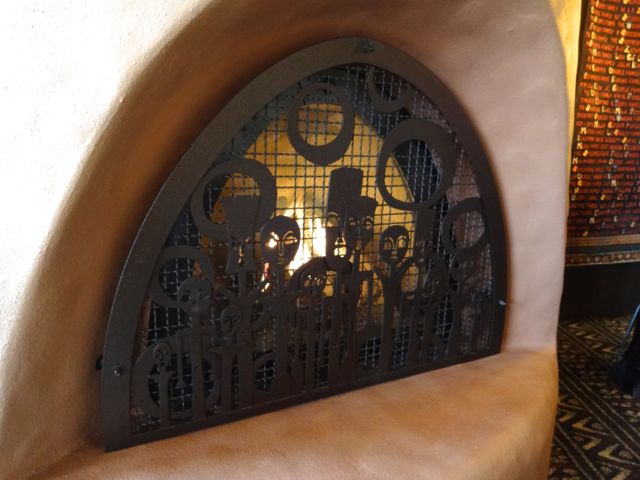
On the other side of the room, there is the King’s fireplace – the screen is very beautiful, displaying the king and his subjects / family
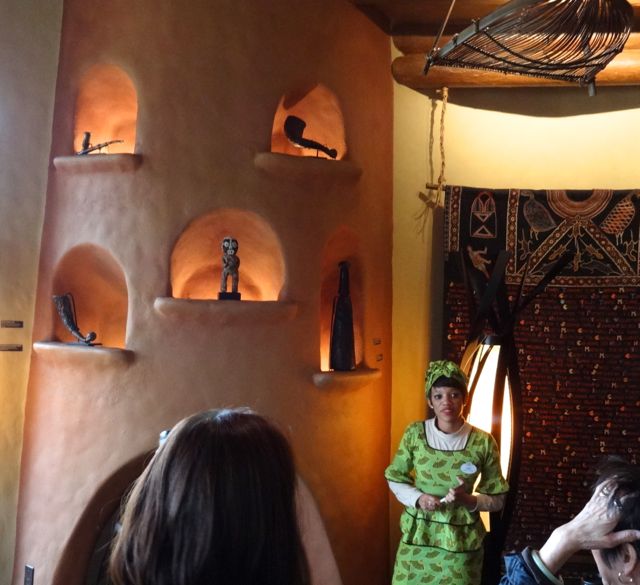
The niches above the fireplace contain various artifacts… the center one is a dog to chase away evil spirits
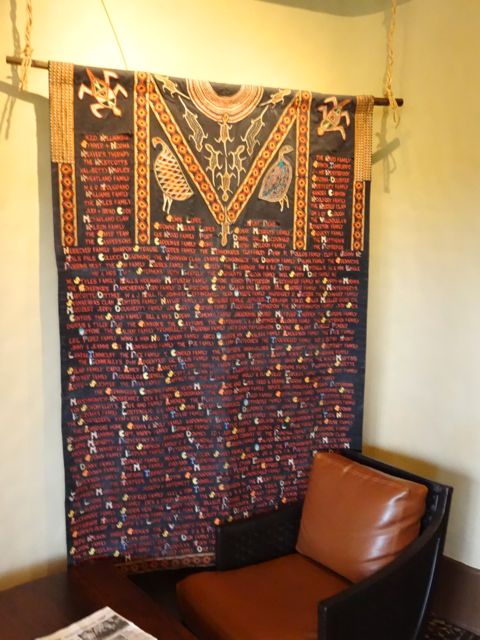
… there are two Family Hangings, they contain the names of the first families to stay at Kidani Village, they are thus honored in the King’s Room
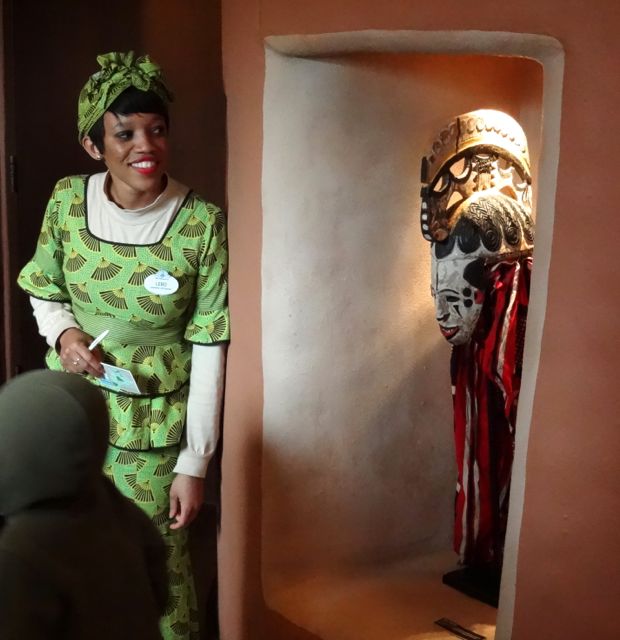
Lebo is showing us one of the many masks at Kidani Village and Jambo House, this one represents the ideal feminine beauty – yes, you can actually touch it
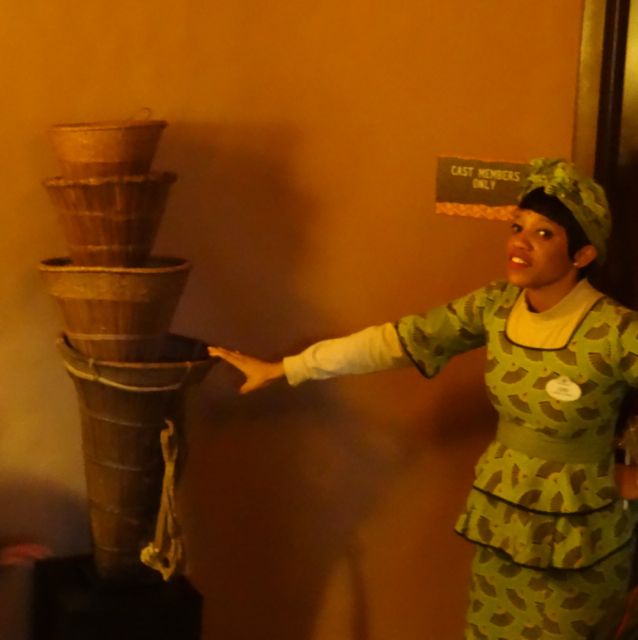
Here’s an item without a placard! Lebo asked us to guess what it was for. Nora guessed for sifting/grading grain… Close, it’s for getting the grain out of traditional beer… Its a sieve
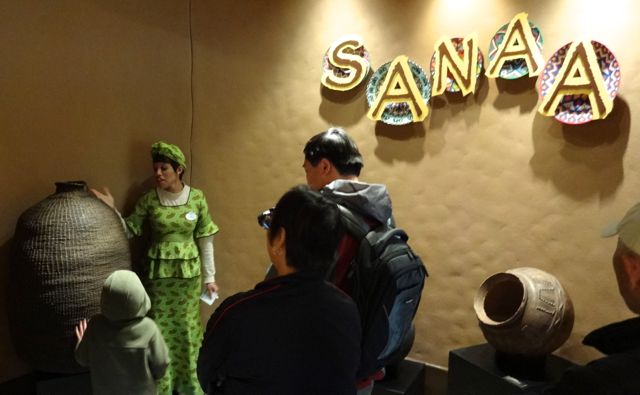
This large basket, and ones like it, are used for transporting grain – they’re very heavy when filled
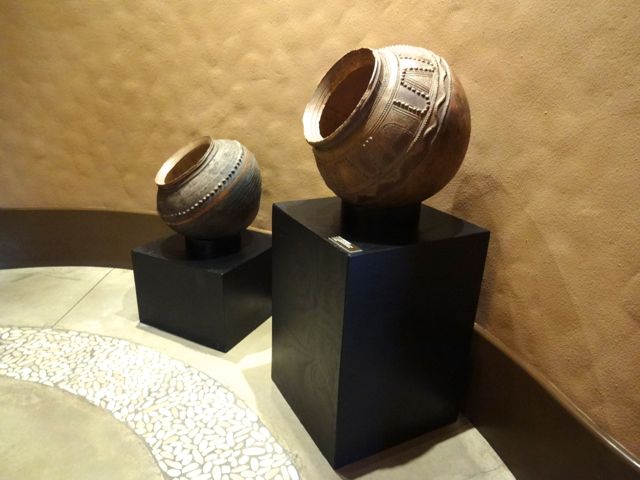
Two large, and beautiful, clay pots – these have many uses… water storage, cooking, and beer fermentation
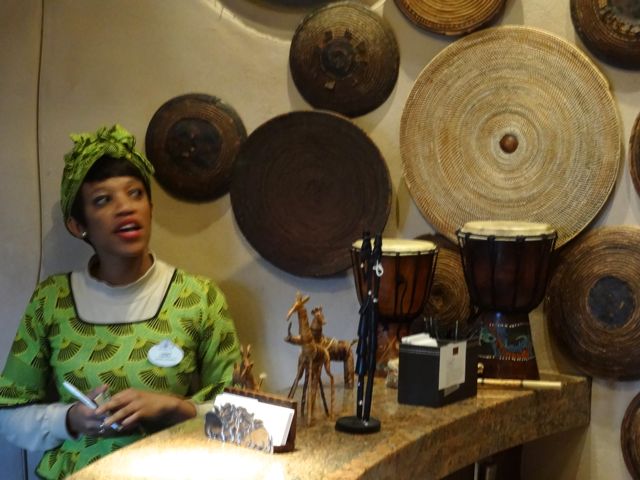
At the check in desk for Sanaa, Lebo explains that the many baskets on the wall are the sort that are used to clean grain of insects etc. The grain is placed on these baskets and tossed lightly so that the lighter weight “dirt” flies away from the grain. Hidden Mickey alert!

At the entrance to Sanaa – more beaded necklaces and another proverb (this one’s a favorite of Lebo’s)
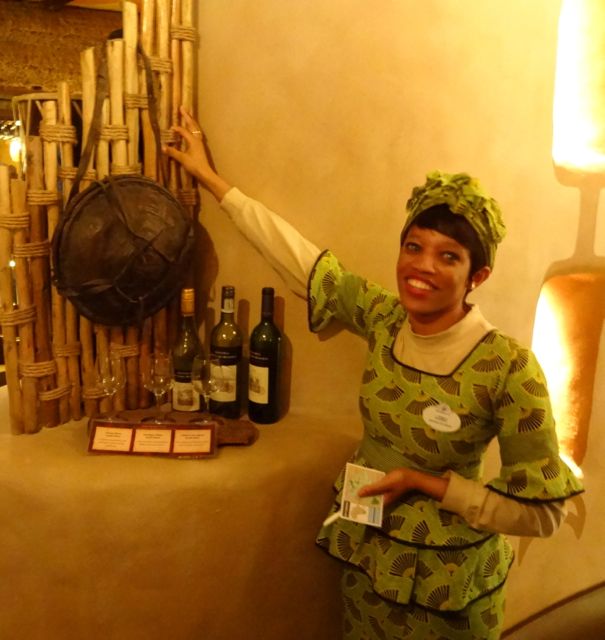
This is a “lunch box” (nora guessed that it was a canteen – well, it’s right outside the Sanaa bar!)
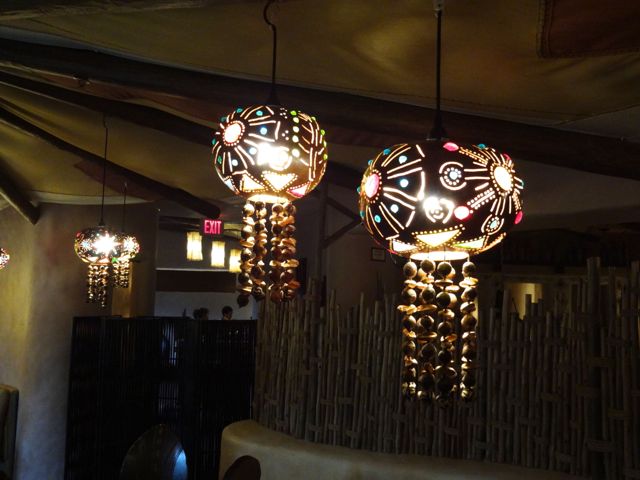
These lights (in the small dining area to the right) are made of hollowed out and carved gourds, decorated with bits of colored glass & seeds & nuts
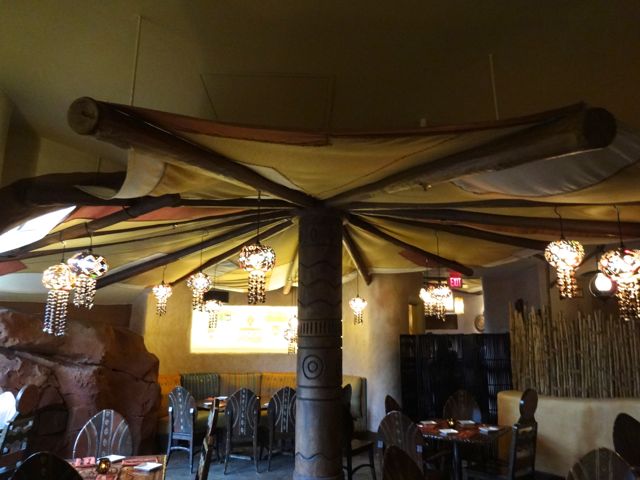
This area of the dining room is covered by a tent… It is a covering used on ships that transport spices, it keeps the sun and rain off of the sailors
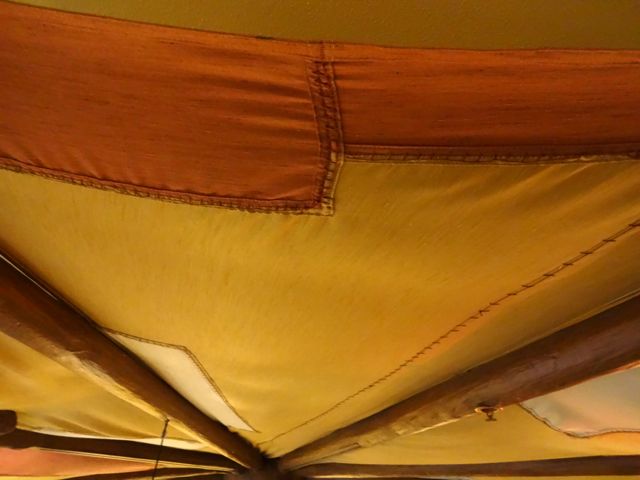
Now you can see the stitches on the tent (we’d never realized it was a tent, nor what it’s usual purpose is)
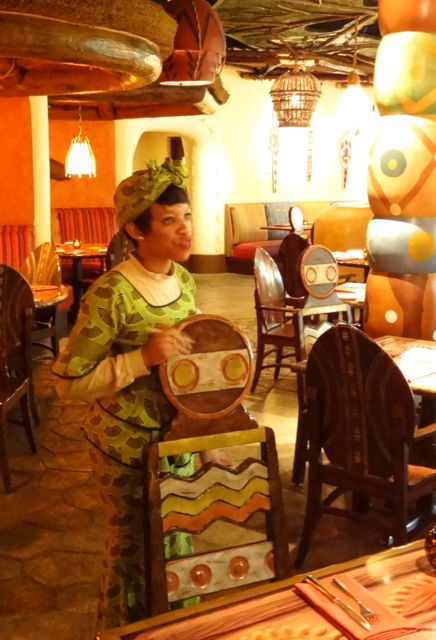
Lebo points out that each table at Sanaa has one of these large chairs, nora volunteered that this chair was special for the head of the family – Lebo put her hands on her hips and asked if we’d done this tour before, “no” but when nick said that whoever was sitting in that chair paid for dinner, she thought it was a great joke!
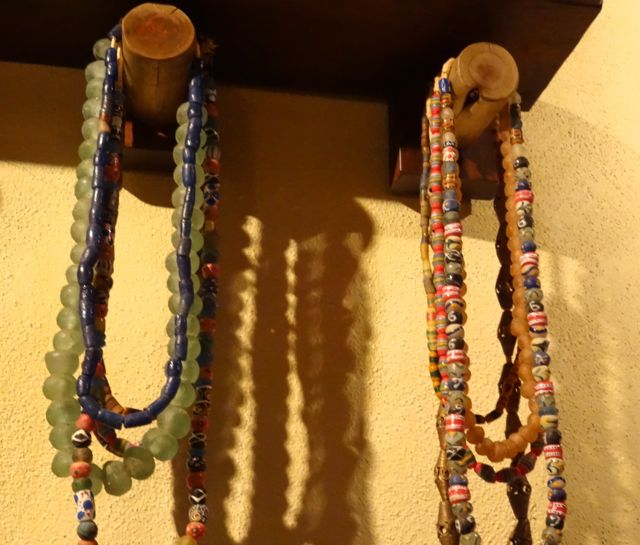
More necklaces in Sanaa, they’re so ubiquitous that it’s hard to believe that we’d never noticed them
